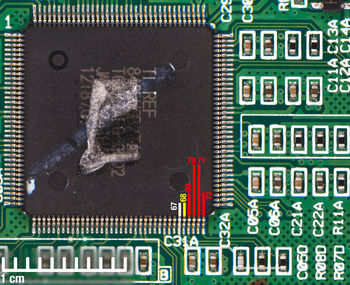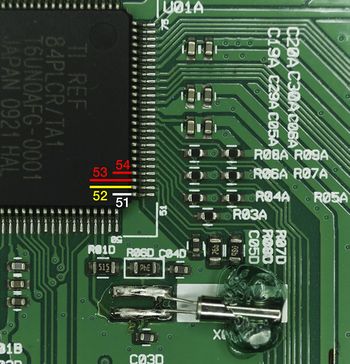83Plus:Overclocking
The TI-83+SE, TI-84+, TI-84+SE, and TI-84+CSE can all be overclocked. The TI-83+SE had special solder pads to enable overclocking, but the TI-84+ series lacks them.
The TI-84+CSE and older TI-84+/SEs use the TA3 ASIC (port 15 reads 45h), pictured on the right. Pins 67-72 on the TA3 connect to an external RC tank circuit. The calculators have 4 CPU speed modes, which were originally supposed to be 6, 15, 20, and 25 MHz; production calculators only have 6 and 15 MHz modes. The four red pins correspond to the four CPU speed modes.
To overclock the TA3, add resistors on pins 70 and 71. The calculator seems unstable above 22 MHz, which suggests that TI didn't implement the 20 MHz mode due to resistors not being accurate enough (some calcs might get a particularly bad resistor and end up being more like 23 MHz for the resistor value that should give 20 MHz).
The TA1 ASIC is a reduced pin count design and appears to lack the pins for the 02 and 03 CPU modes. To overclock the TA1, change the resistors connected to ASIC pins 53 and 54. On the board in the picture, the resistors are labeled R07D and R08D. Labeling and positioning may be different on later devices.

